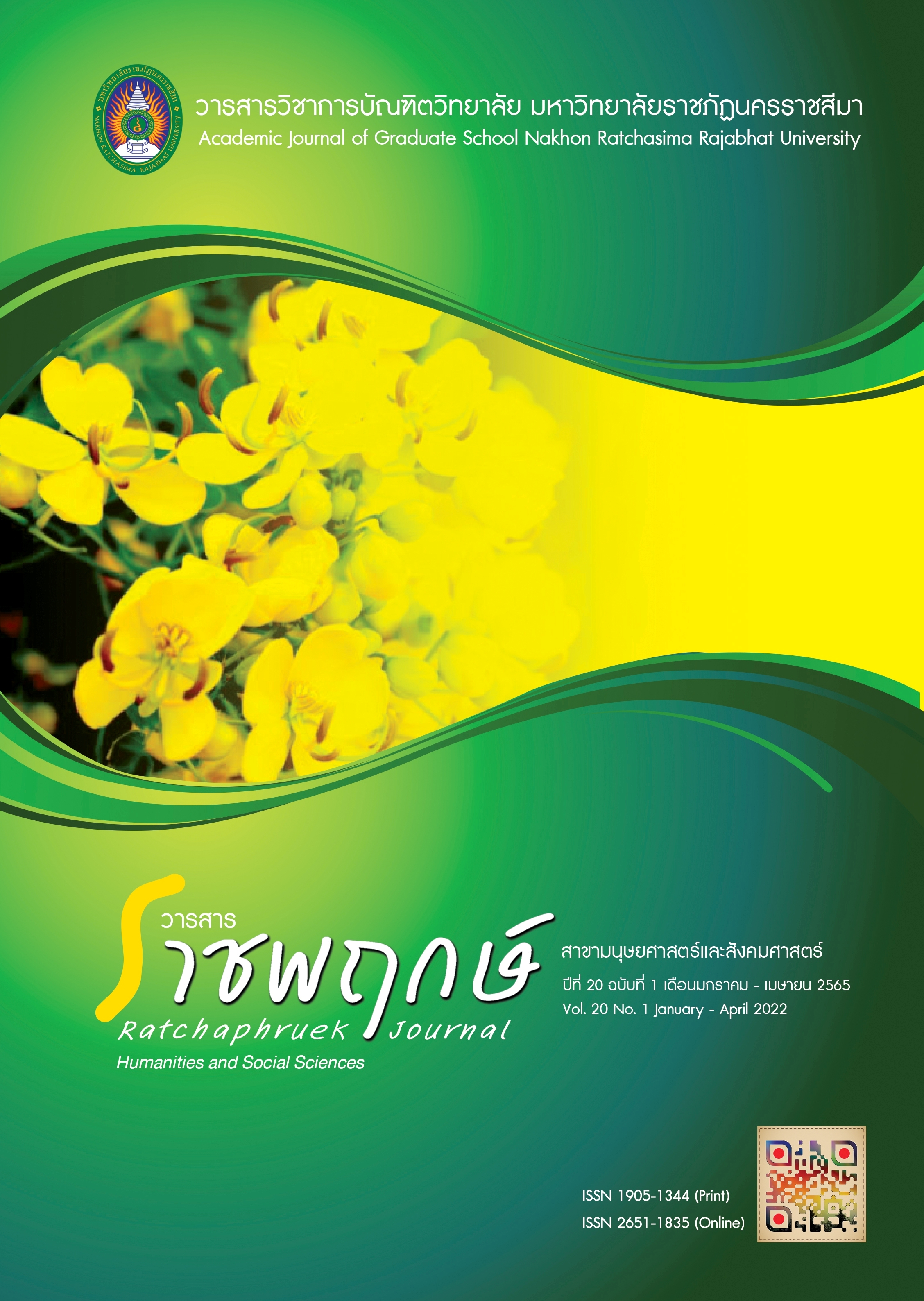Curriculum Development on Earthquakes for Youth and People, Chiang Rai
Main Article Content
Abstract
This study is part of the research of the development of curriculum on the earthquake for the youth and people in Chiang Rai province. The aims were to study the basic information and the need for curriculum development, and to design the curriculum. The sample group were; 1) 880 youth and people in Chiang Rai Province, 2) 5 experts who experienced the development of earthquake curriculum and learning management, 3) 15 experts for the appropriateness of the curriculum, and 4) 10 experts for group discussion. The research instruments were (1) a questionnaire, (2) an interview form, (3) an evaluation form, and (4) a focus group form. The research was implemented in two steps; to study the basic background and the need, and to design the earthquake curriculum. The data were analyzed by using frequency, percentage, mean (), standard deviation (S.D.), and content analysis. The results were as follows: 1) The opinions towards the need for the curriculum development appeared that the youth and people needed the earthquake curriculum at the high level,2)Two types of the earthquake curriculum were found: the curriculum for the youth and the curriculum for the people. Both curriculums were appropriate at the high level, respectively. The results from the focus group discussion showed that the real situation is needed to be considered, then the curriculums were improved and tried out. There were nine elements:1) Principles and Rationale,2) Curriculum Objectives, 3) Duration, 4) Target Group, 5) Guidelines for Learning Activities, 6) Instructions for Using the Course Manual, 7) Curriculum Structure, 8) Learning Activities, and 9) Assessment. There were four learning units: 1) Earthquake, 2) Handling with the earthquake, 3) Safe from the earthquake, and 4) Learning after the earthquake.
Article Details

This work is licensed under a Creative Commons Attribution-NonCommercial-NoDerivatives 4.0 International License.
References
กรมอุตุนิยมวิทยา. (2559). รายงานการเกิดแผ่นดินไหวบริเวณจังหวัดเชียงราย. สืบค้นเมื่อ 15 มกราคม 2563, จาก http://www.earthquake.tmd.go.th/documents/file/seismo-doc-1404703458.pdf.
ฆนัท ธาตุทอง. (2559). หลักการจัดการเรียนรู้. นครปฐม: เพชรเกษมการพิมพ์.
จักรกฤษณ์ จันทะคุณ. (2558). ภัยพิบัติศึกษา: แนวทางการจัดกิจกรรมการเรียนรู้เพื่อเตรียมความพร้อมรับมือภัยพิบัติ (ตอนที่ 1). วารสารศึกษาศาสตร์ มหาวิทยาลัยนเรศวร, 16(4), น. 188-201. สืบค้นเมื่อ 20 กันยายน 2564, จาก https://so06.tci-thaijo.org/index.php/
edujournal_nu/article/view/43753/36194
ทิศนา แขมมณี. (2560). ศาสตร์การสอน: องค์ความรู้เพื่อการจัดกระบวนการเรียนรู้ที่มีประสิทธิภาพ (พิมพ์ครั้งที่ 21). กรุงเทพฯ: จุฬาลงกรณ์มหาวิทยาลัย.
บุญเลี้ยง ประทุมทอง. (2554). การพัฒนาหลักสูตร (พิมพ์ครั้งที่ 3). กรุงเทพฯ: จุฬาลงกรณ์มหาวิทยาลัย.
สงัด อุทรานันท์. (2532). พื้นฐานและหลักการพัฒนาหลักสูตร. กรุงเทพฯ: มิตรสยาม.
สำนักงานพัฒนาชุมชนจังหวัดเชียงราย. (2562). สรุปผลการจัดเก็บข้อมูลความจำเป็นพื้นฐานและข้อมูลพื้นฐานระดับหมู่บ้าน ระดับจังหวัดเชียงราย ประจำปี 2562. เชียงราย: ผู้แต่ง.
สุคนธ์ สินธพานนท์. (2558). การจัดการเรียนรู้ของครูยุคใหม่เพื่อพัฒนาทักษะของผู้เรียนในศตวรรษที่ 21. กรุงเทพฯ: ศูนย์หนังสือจุฬาลงกรณ์มหาวิทยาลัย.
วิชัย วงษ์ใหญ่. (2533). การพัฒนาหลักสูตรแบบครบวงจร. กรุงเทพฯ: จุฬาลงกรณ์มหาวิทยาลัย.
Bloom, B., Englehart, M., Furst, E., Hill, W. & Krathwohl, D. (1956). Taxonomy of educational objectives: The classification of educational goals. Handbook I: Cognitive domain. New York, Toronto: Longmans, Green.
Federal EmergencyManagementAgency (FEMA). (2006). Principles of emergency management. Retrieved January 15, 2021, from http://www.rn.org/courses/coursematerial-80.pdf
Kerr, J. F. (1968). Changing the curriculum. London: University of London Press.
Tyler, R. W. (1949). Basic principles of curriculum and instruction. Chicago: University of Chicago Press.
Taba, H. (1962). Curriculum development: Theory and practice. New York: Harcourt, Brace & World.


